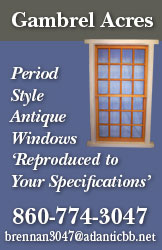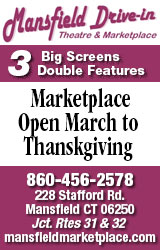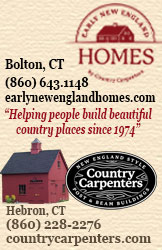
Home Structural Products & Services, Stairlifts
Structural Products & Services, Stairlifts
Furniture, Clocks,
Accessories
Antiques, Folk Art,
Fine Art, Auction Houses
PICKIN' AND GRINNIN' AT THE MANSFIELD DRIVE-IN FLEA MARKET
| One of the top entertainment venues in northeast Connecticut is the Mansfield Drive-In. Yankee Magazine lists it among 2013’s “Best in New England”. An article in the June 2013 Connecticut magazine talks about the double features on three screens and how family friendly the place is. The article calls the long-time owner, Michael Jungden, an “unrepentant hippie.” |  |
As someone who has known Michael for forty years, I would add that beneath the laid-back demeanor he is a prototype Connecticut Yankee, the kind of guy who believes that, if you want something done right, you do it yourself. Much of the landscaping that helps make the Drive-In special was put in with Michael’s own hands; trees that he planted twenty-five years ago tower around the edges of the grounds today.
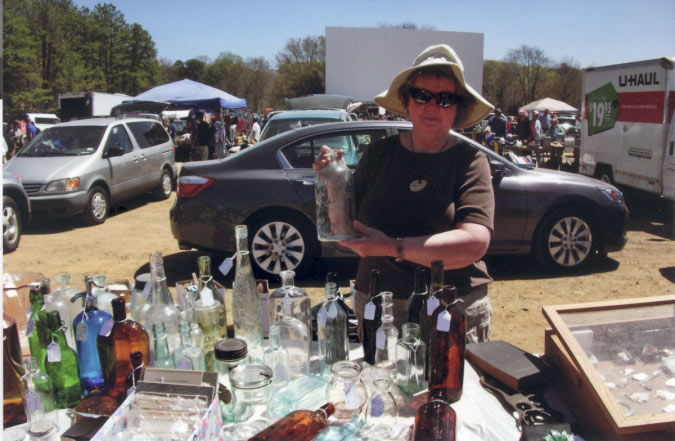 Susan Boulanger holds up a Buffalo Lithia Water bottle "Nature's Matrerio Medica" circa 1870-1880. Susan Boulanger holds up a Buffalo Lithia Water bottle "Nature's Matrerio Medica" circa 1870-1880. |
The full name of the place is Mansfield Drive-In and Marketplace. The media has taken notice of the Drive-in, but they have so far failed to mention the Marketplace, the flea market that happens every Sunday, starting the first Sunday in spring to the Sunday before Thanksgiving, and has grown to be the largest flea market in northeastern Connecticut, with three hundred plus venders selling furniture, housewares, art, and everything you can imagine, plus some things you could never imagine. |
I went to the Mansfield Drive-In Marketplace one cool sunny morning this past May to see what I could find for twenty dollars. My focus for this trip was low on the dollar side but high on the historical significance side. I was looking for things to keep, not sell.
| After fortifying myself at the snack bar with an order of clam fritters, I walked around kids playing Frisbee and headed down a long aisle of tables. The first thing that caught my eye was a reproduction watercolor of an early Victorian couple dancing. A plastic bubble-top covers the 5 ½” x7 ¾’ picture. Inside the bubble are painted in black an ornamental grill and a chandelier, giving the piece a 3D effect. In very small letters towards the bottom was printed “CORP.S.COLEFF 5-15-42.” What is special about this picture is the deft, detailed way Corporal Coleff painted the dancers’ clothes and the background. I bought it for four dollars. | 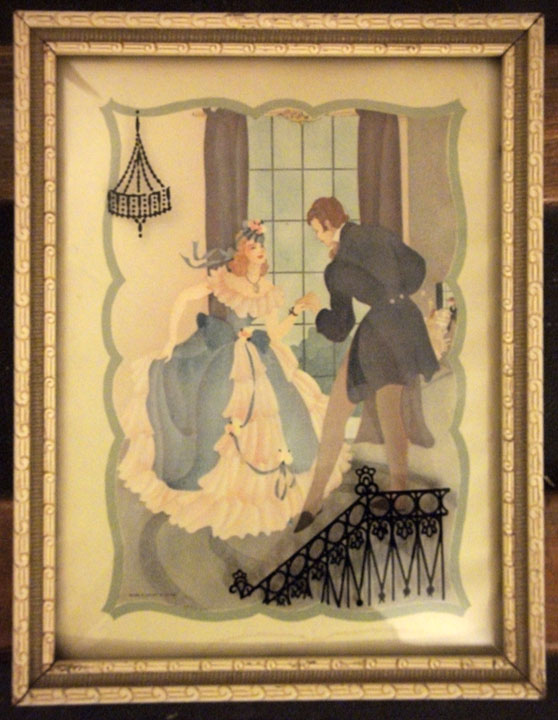 |
|
On the next aisle, I came across a 7 1/4” diameter plate commemorating “JOHN BROWN”S FORT Harper’s Ferry, W. Va.” The plate was a little worn; it looked like it was about fifty years old. On the back it was marked “CONRAD CRAFTERS Wheeling, W. Va.” A few weeks later, I Googled Conrad Crafters and found out they were still in business in the same place. I talked on the phone to the present owners, who told me the business has been in their family since 1959. They had no record of who commissioned the plate, no information on it at all. The plate was decorated with an excellent drawing of the government arsenal building at Harper’s Ferry. |
| Across the aisle I saw a display of old bottles. The table belonged to Paul and Susan Boulanger, who were happy to talk about what they had for sale. Susan showed me a small, flat bottle with “C. OSGOOD & CO. NORWICH CONN.” stamped in the glass. Susan figured it was made sometime in the 1870s or the 1880s. I paid Susan four dollars for it. A few weeks later, I looked it up online and learned that Charles Osgood had the largest drugstore in Norwich in the period after the Civil War and that he manufactured various “notions,” along with making and selling paint. I finished my tour at a line of tables that twisted off into a grove of spruce and oaks. Little kids were chasing each other around the trees. Dealers mingled with each other in the shade, each of them throwing a glance at their own table every twenty seconds or so. |
 |
I found a 10” diameter Buffalo Pottery commemorative plate of Independence Hall in Philadelphia. It had some crud on it; a piece of paper taped to it said “AS IS $3.00.” Buffalo Pottery began in Buffalo, New York, in 1910 and is still in business today as Buffalo China. I bought the plate, and at the next table bought a Higgins ink bottle from the 20s for fifty cents. Higgins started making ink in 1880 and is still at it today.
The last piece I purchased that morning was at a table in the shade where a half dozen dealers where shooting the breeze. I walked into the middle of them and picked up a pale pink Wedgwood mini-plate with a picture of the Governor’s Palace at Colonial Williamsburg. One more three-dollar deal went down.
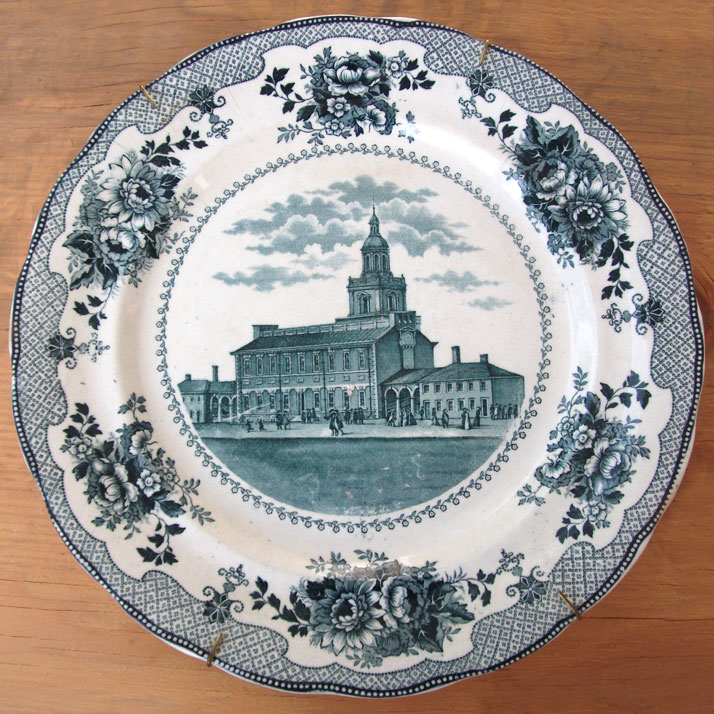 |
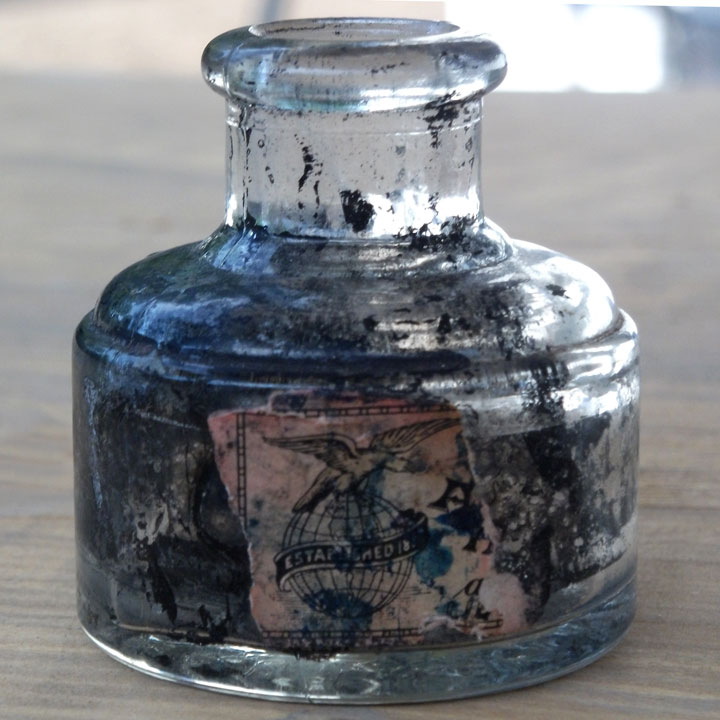 |
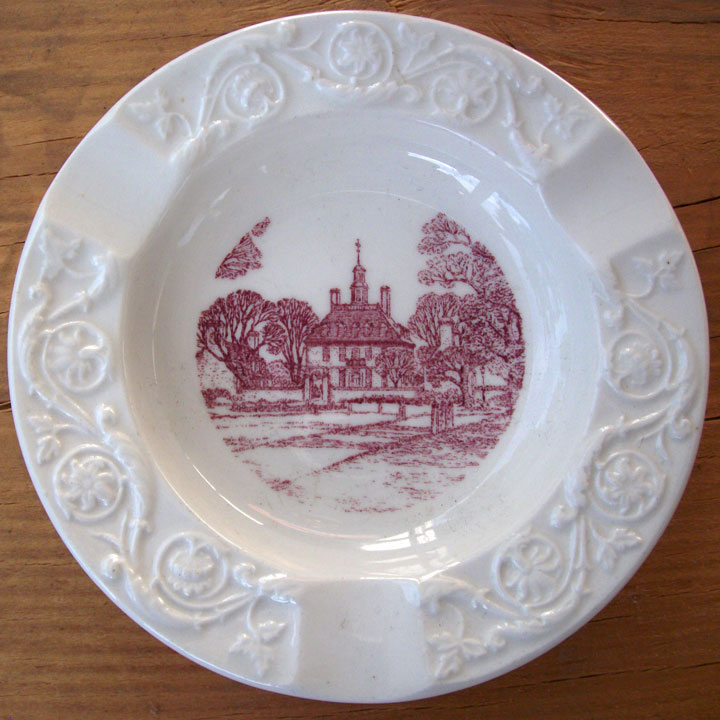 |
I’d made the entire round of the flea market, including the 400-foot-long indoor arcade fashioned from old chicken coops, in two and a half hours. My six purchases had set me back $17.50, leaving me enough change from my twenty dollar bill for what I really wanted after all that walking, another order of clam fritters.

